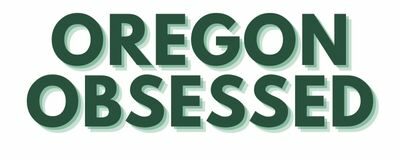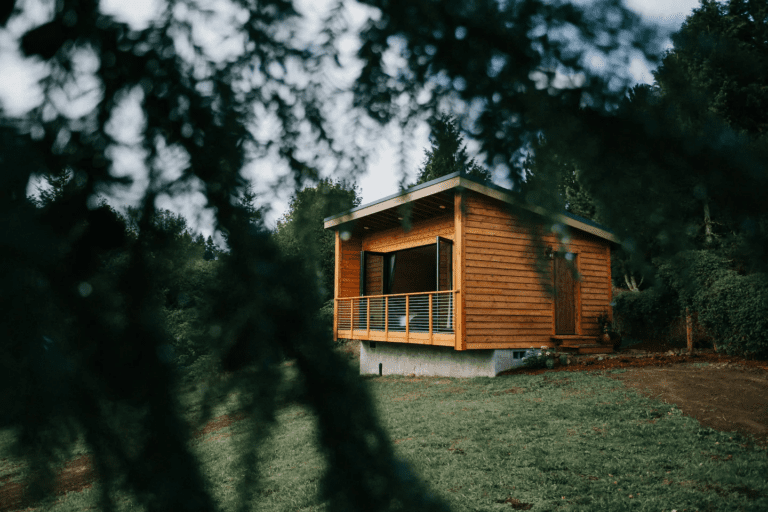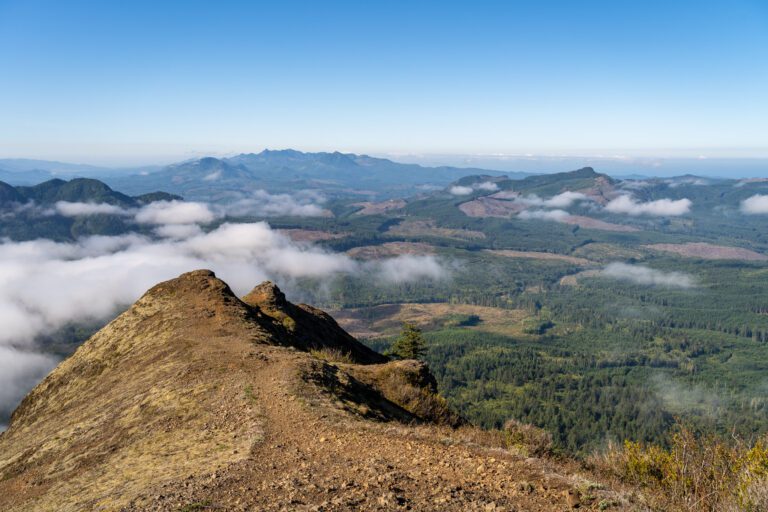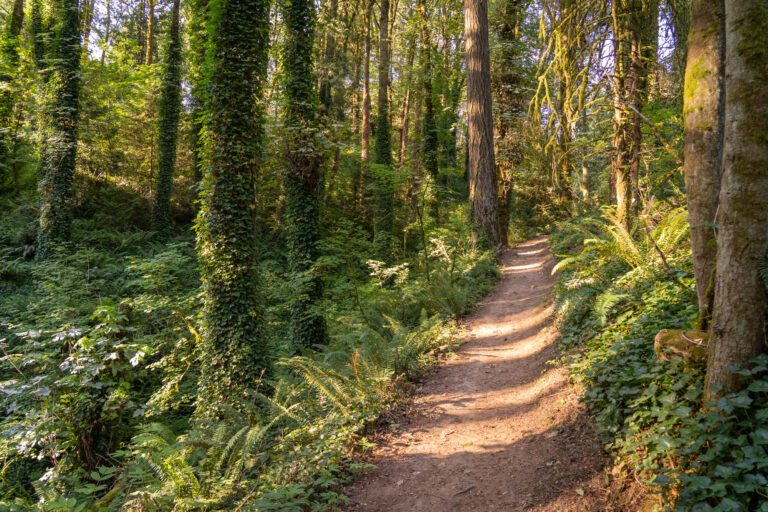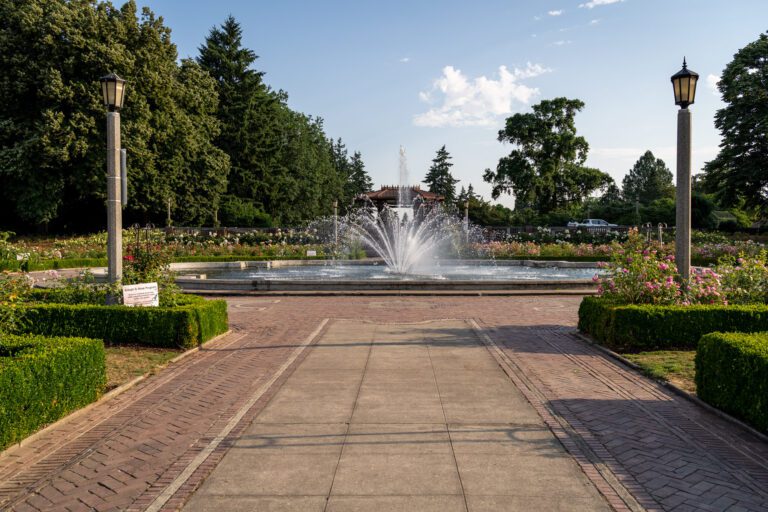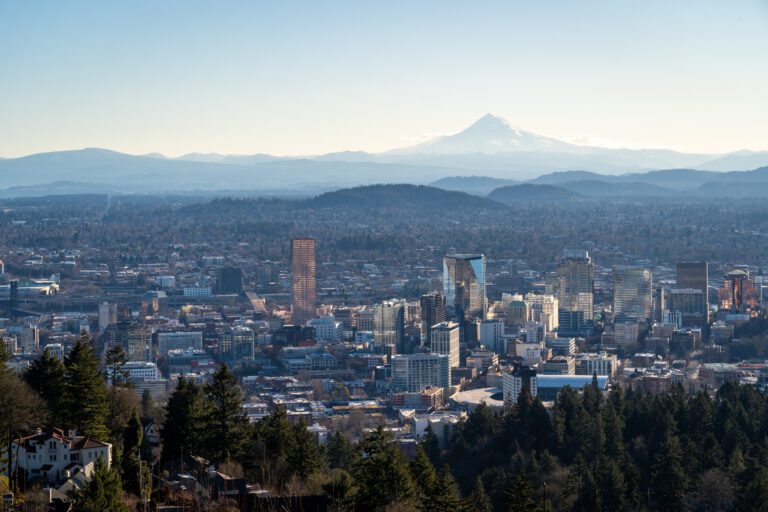How to Plan an Amazing Portland Itinerary (for First Timers)
Portland is a very, very fun city to explore (and also to live in), with all of the things we love about cities on the west coast in a very compact, easy to access package. It has an incredible food scene, leaning towards the less expensive side of the spectrum, with new and exciting food carts popping up basically daily.
It has a plethora of green spaces, which are at their best in the spring and summer when things are in full bloom. And the access to the outdoors and spectacular natural beauty is unparalleled. Just outside the city, you have the coast, the mountains, and the Columbia River Gorge all within about a 90 minute drive.
Basically, we love Portland – which is why we finally moved here after 5+ years of dreaming about it (and nine different trips to the city as visitors) – and we think you will too. We want to share our favorite finds with you to help you see the city and fall in love with it, just like we have.
In this guide to planning an amazing Portland itinerary, we’ll take you through all of the important things to know as you’re planning your trip – how many days, when to visit, where to stay, and more. We’ll also share the top 10 things not to miss while you’re in town.
Then, we’ll give you an overview of how to spend your time in Portland, whether you have one, two, or three days.
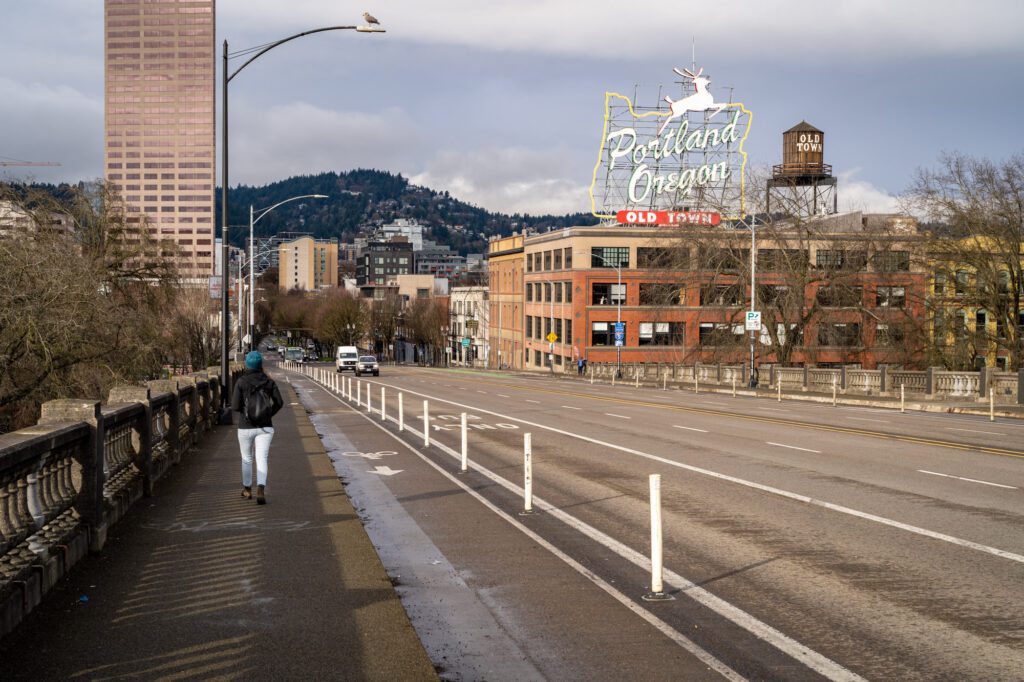
Disclaimer: Some of the links in this post, like hotel and vacation rental links, are affiliate links, meaning at no additional cost to you we make a little bit of money if you click through and book. That being said, we would absolutely never recommend something to you that we don’t stand behind 100%.
How Many Days Do You Need for Your Portland Itinerary?
Unsurprisingly, this is a hard question to answer because it entirely depends on what you’re looking for out of your trip. You could obviously spend a week in Portland and not run out of things to do and see, but most people don’t have that kind of time on their hands.
We think 2-3 days is the right amount of time for most people. Two days is the right amount of time to see Portland itself.
With an extra day or two, you’ll have time to tackle some day trips from Portland to wine country, the waterfalls in the Columbia River Gorge, or the Oregon Coast (though it’s worth noting that you’ll need a car to do those, or join a guided tour).
If Portland is more of a jumping-off point for a broader Oregon road trip, you can see the highlights in a day and save the rest of the city for your next trip.
Are you going to be able to see, eat, and drink everything Portland has to offer? Of course not. But you can get a taste, which will likely get you excited to return ASAP and dive a little deeper.
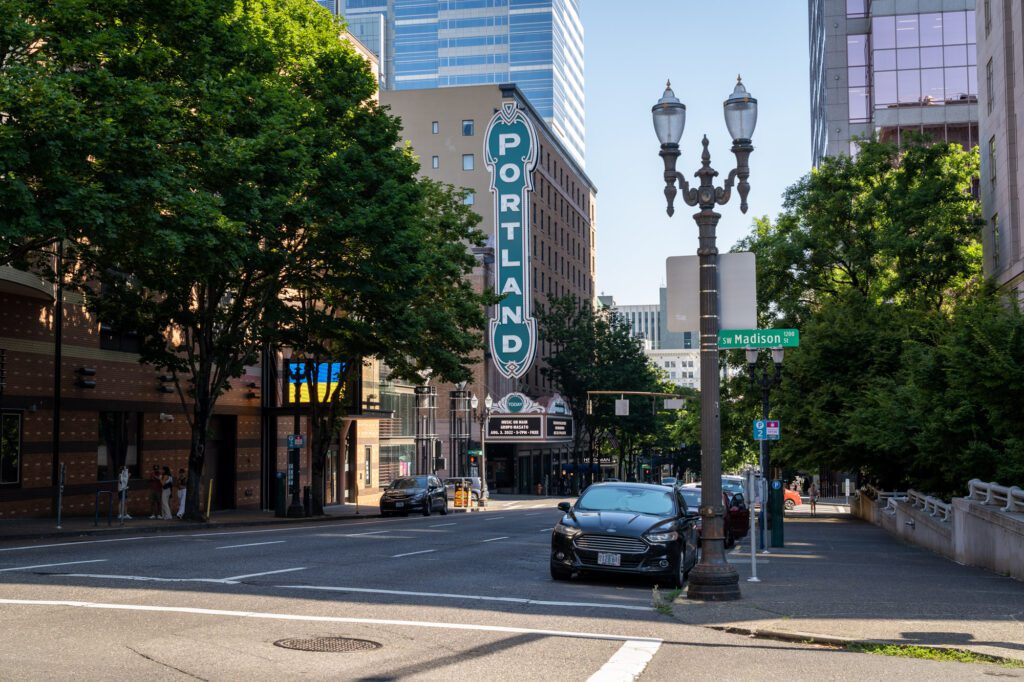
Top 10 Portland Highlights – Don’t Miss These on Your Itinerary!
Here are top 10 Portland highlights that you absolutely shouldn’t miss while you’re in town.
If you have 2-3 days, you should be able to check most of these off over the course of your time (though there may be a couple that you’ll have to save for next time).
Spend Hours Browsing the Endless Shelves at Powell’s Books

Every time I go to Powell’s, I walk out with far too many new books. It’s the largest independent bookstore in the world, and book lovers could easily spend several hours wandering the aisles.
The staff recommendations are also excellent, which you can find in either entryway (yes, there are two entrances – it’s that big).
Eat Your Bodyweight in Donuts (Doughnuts?)
For whatever reason, Portland is a great city for donuts. You’ve likely seen or heard about Voodoo, which is a fun place to visit for the novelty, but definitely aren’t (even close to) the city’s best donuts.
Head to Blue Star (a Portland classic), NOLA (for a cross between a croissant and a donut) and Pips (for fried-to-order donut holes).
If you’re gluten free, head to Petunia’s Pies and Pastries on weekend mornings for the best gluten free donuts I’ve ever had.
Take a Walk Through Hoyt Arboretum
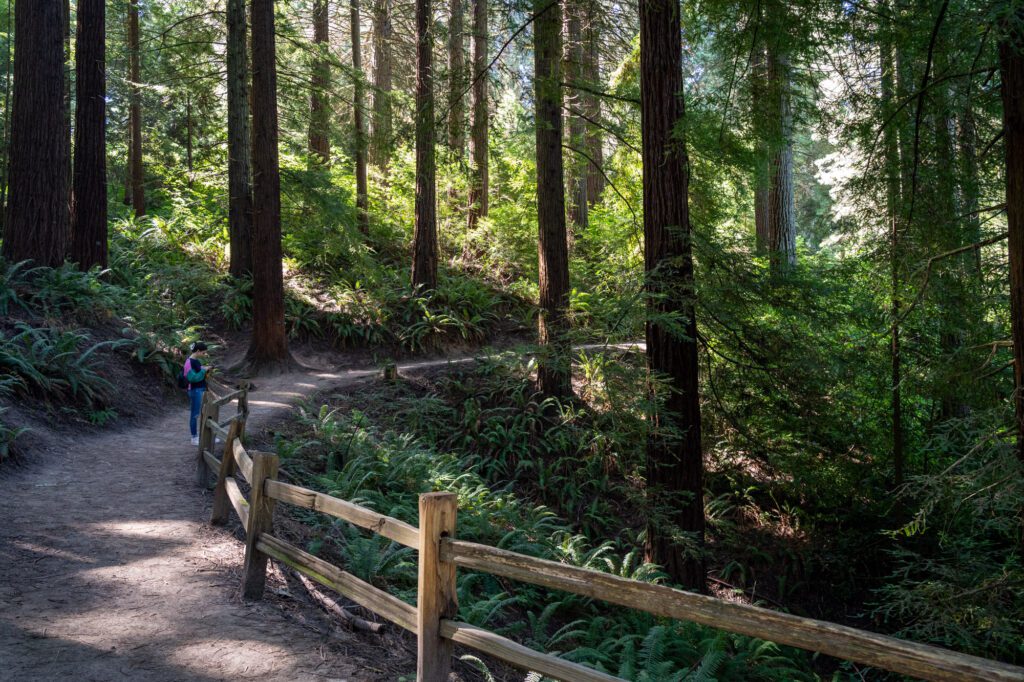
Found in Washington Park, Hoyt Arboretum is a nursery for a wide variety of plant species. Whatever you do, don’t miss the Redwood deck. But there are some nice hikes (really, walks) to do to see the cornucopia of plant life that the arboretum has to offer.
Explore East of the Willamette River
Downtown Portland is west of the Willamette River (pronounced “will-am-it”), and the east side of the river is where we live.
It is more residential (and charming, in our opinion), and has some of Portland’s best food and drinks.

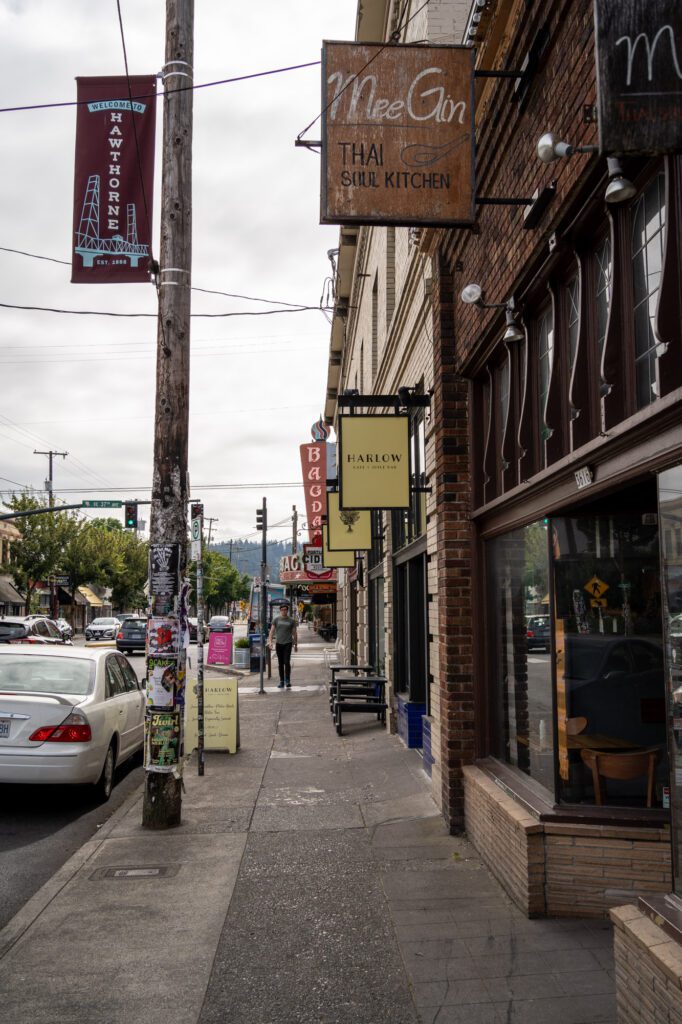
The stretches along Hawthorne and Division in southeast Portland, and Mississippi Ave and Alberta Street in northeast Portland, are some of our favorite stretches in the city, and are well worth prioritizing during your trip.
Eat at a Food Truck (or Food Cart)
Like donuts, Portland is also known for its food carts, which give smaller food businesses an opportunity to get a start without incurring all the operational costs that come with a standalone restaurant.
We think that’s part of the reason why Portland’s food scene is so much more diverse than, say, San Francisco (especially at lower price points).
It’s a much more manageable risk to open a food truck than to pay rent in San Francisco, which allows for more innovation and risk-taking!
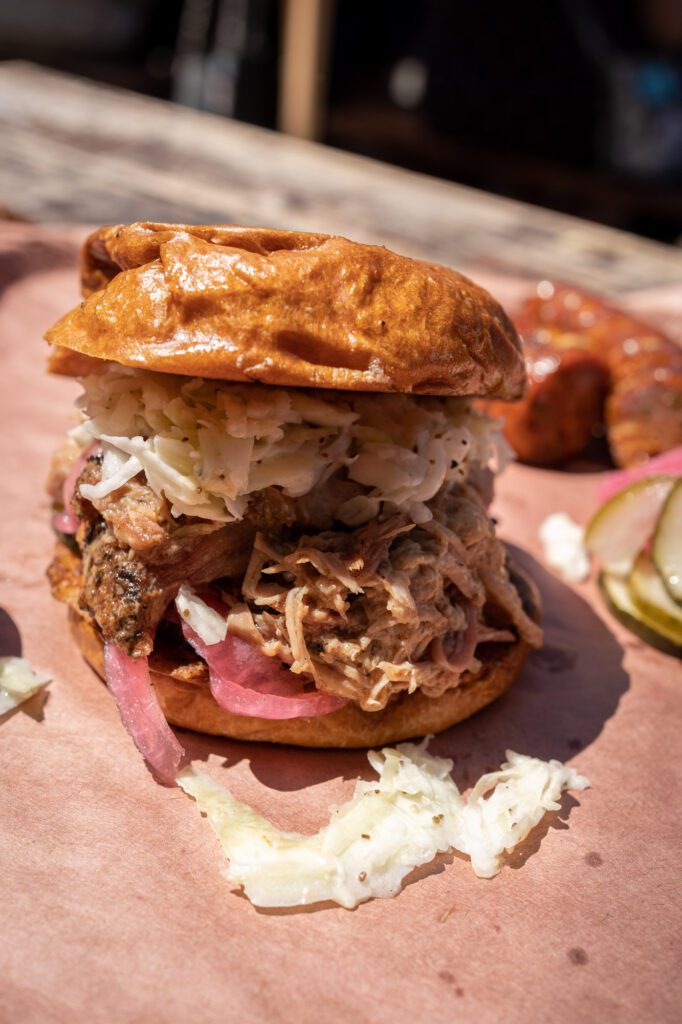

We love the pods at Prost (on Mississippi a few blocks from where we live – it was just on Somebody Feed Phil, our favorite food show on TV!), Hinterland (Matt’s BBQ Tacos!), and Hawthorne Asylum.
Get Out of the City Center for a Hike at Mt. Tabor or Powell Butte.
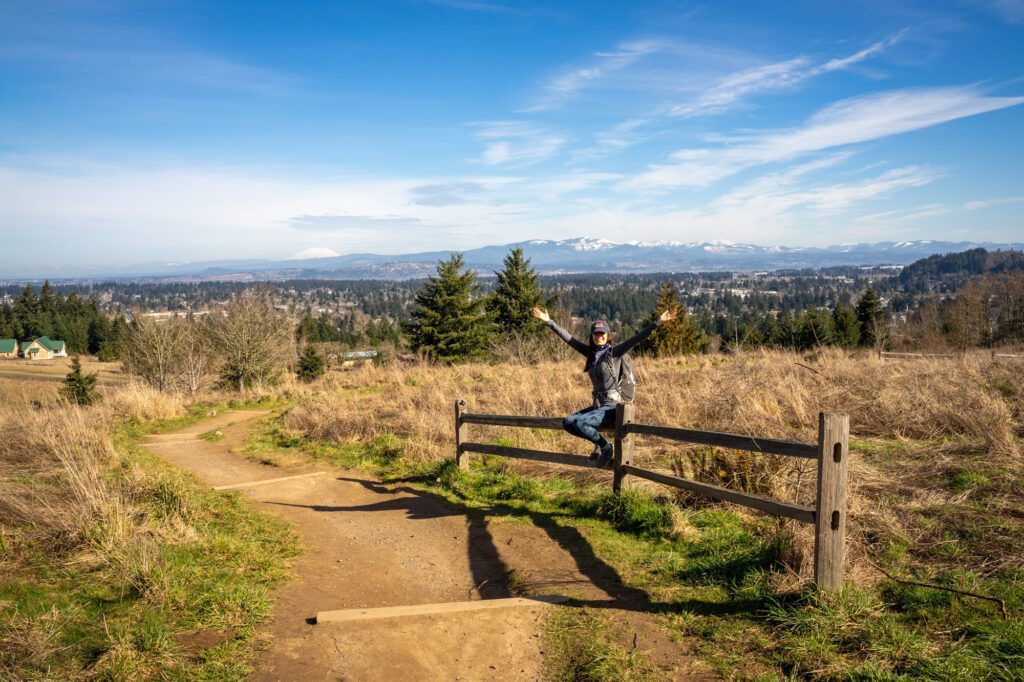
Within the city limits, there are a couple of excellent places to hike that will make you forget the city is just 20 minutes away. Mt. Tabor is closer in and has nice views of Portland’s skyline, but Powell Butte is our favorite for the great views of Mount Hood to the east, and Mount St. Helens and Mount Adams to the north.
Read more: 21 Incredible Hikes Near Portland, Oregon (Local’s Guide)
Experience the Bounty of Farm-fresh Produce at the Massive PSU Farmers Market
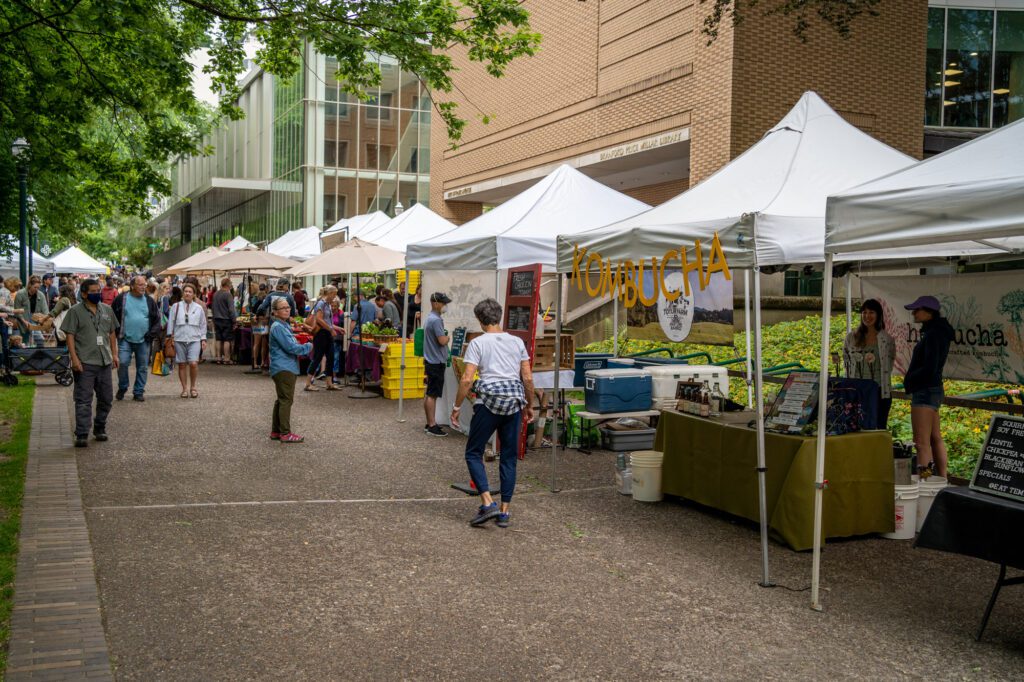
If you’re a foodie, definitely pencil in the PSU Farmers Market on Saturday morning. They have a nice blend of produce and other foods sourced from local producers, packaged foods, and ready-to-eat food trucks and stands. It’s massive – easily the biggest farmers market we’ve ever been to.
See the International Rose Test Garden in Full Bloom
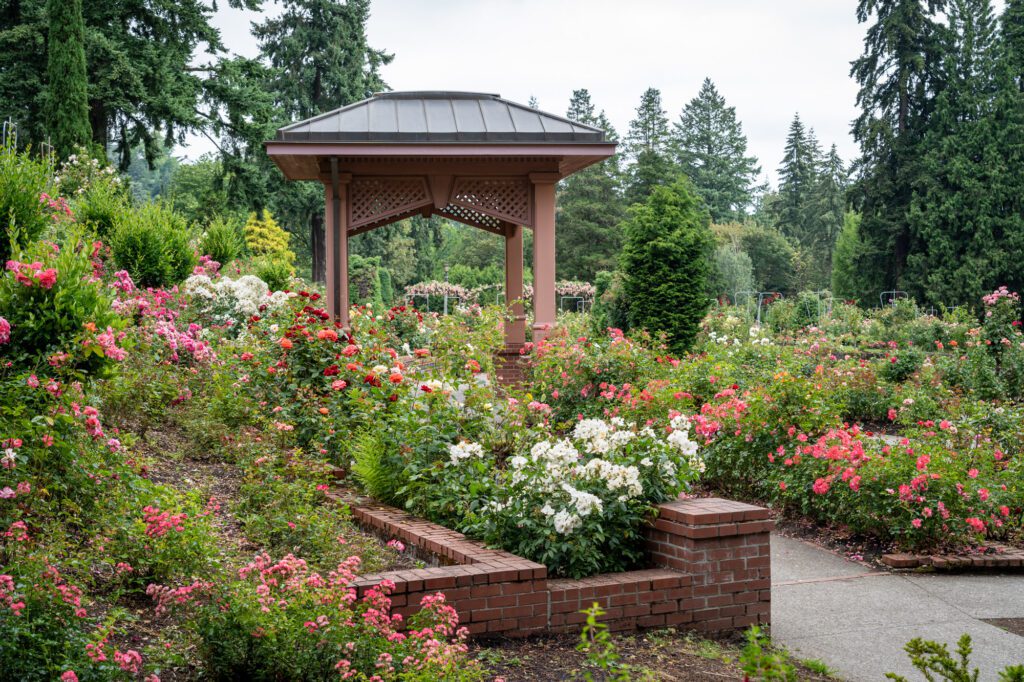
In the spring and early summer, the International Rose Test Garden is quite a spectacle. You’ll find somewhere around 10,000 roses, all in various stages of bloom.
Make it a priority to get here – we’d say it should be your #1 priority in Washington and Forest Parks (sorry Pittock Mansion and Hoyt Arboretum, we love you too!).
Catch a Portland Timbers Game

If you’re into soccer (or, honestly, if you’re not), the Portland Timbers have the best atmosphere in the country. Though, I will say, the competition is heating up with some of the newer MLS franchises rivaling Portland’s enthusiasm.
Soccer is big in the Pacific Northwest, and Timbers games are always a good time, complete with actual chainsaw-ing every time the Timbers score a goal. Games are mostly on weekends between spring and fall.
Indulge in Local Coffee, Beer, Wine, and Cider
Similar to the food carts, Portland is really great at incubating small businesses and allowing for innovation and risk taking. That carries over from donuts to food carts, and into the beer, coffee, and cider scene.
There are some great independent breweries (Ex Novo and Gigantic), coffee roasters (Coava), and cideries (Alter Ego!) in Portland.
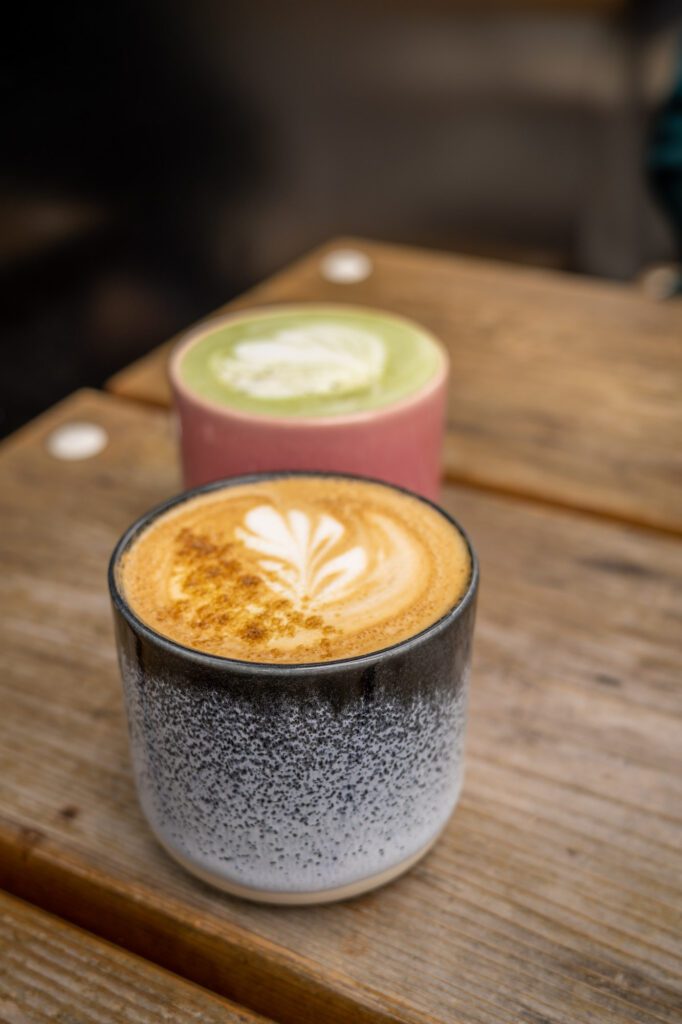

Read more: Exactly Where to Find the Best Coffee in Portland, Oregon
Planning the Perfect Portland Itinerary: A Complete Guide to Visiting Portland, Oregon
Like we mentioned above, 2-3 days is the right amount of time to spend in Portland for most people.
In this section, we’ll give you a rough overview of what your itinerary might look like with one, two, and three days, plus some ideas for spending more time in and around Portland.
We have more detailed guides to each trip length, which we’ll link to in each section. There, you’ll find a more in-depth guide to spending time in Portland, with all sorts of details and suggestions that just don’t fit in this guide.
With One Day
If you only have a day in Portland, you’ll be happy to hear that Portland is a relatively small city, which means you can see a decent chunk of the main attractions in a day. Of course, you’re not going to be able to fit it all in, and trying to do so kind of goes against everything that Portland stands for.
We’d focus your time on three main themes: the parks, the Downtown core, and the Central Eastside.
Start your day with a trip to one of Portland’s parks. If you’re looking for a longer walk through the woods, head to Forest Park and tackle the hike up to Pittock Mansion, passing the Witch’s Castle along the way.
At the top, you’ll find a, well, mansion perched on the hill with a fantastic view of the downtown skyline.
It was built by one of the first rich people to say “hey, this could be a thriving city.”
You can go inside and do a tour, but we personally would skip it and spend your time elsewhere.
Note that if you do choose to do the hike, it will take an hour or two of your time, so you’ll want to get an early start. If not, you can still go directly up to Pittock Mansion to enjoy the view without doing the hike.
Next, we’d stop by the International Rose Test Garden, which is home to a staggering number of roses in all shapes, sizes, and colors.
You can take a ride share or walk from Pittock Mansion, and then walk from the Rose Garden down to the Northwest District.
This is an excellent place to grab breakfast / lunch – Pine State Biscuits is a Portland classic with their biscuit sandwiches, and Ken’s is one of the (if not THE) best bakeries in town.
Start your afternoon in downtown Portland at Powell’s Books, which is both the largest bookstore in the world, and also an excellent place to spend a couple of hours, especially if you’re an avid reader.
I always walk away with far too many books in my bag when I leave Powell’s.
Nearby, Heart Coffee is a great place to grab a cup of single-origin, perfectly roasted coffee that Portland is known for, and Never Coffee is the place to go for inventive flavored lattes with local ingredients.
Wander south towards Courthouse Square, which is the heart of downtown Portland when it comes to retail and shopping. Departure Lounge – which is perched on a rooftop overlooking the square – is a great spot to grab a drink with a view.
Turn east towards the river, and take a walk along the waterfront before walking across one of Portland’s many bridges crossing the Willamette.
Spend your later afternoon on the other side of the river, which is our favorite part of Portland.
Specifically, we’d focus your time on the industrial area called the Central Eastside, which is the place to find warehouses-turned-breweries, and the stretches along Hawthorne and Division, which are the place to find some of Portland’s best food.
Go to Schilling Cider House for 40+ ciders on tap, most from the Pacific Northwest, or the Cascade Brewing Barrel House across the street for barrel aged beers.
For dinner, your options are nearly limitless. We like Bollywood Theater on Division for excellent Indian street food, and Olympia Provisions’ beer garden for German-inspired sausages and beers.
Close out your day with Portland’s favorite ice cream – which has now been exported to a range of cities across the country – Salt & Straw. If you’re here during the summer, you’re in for a treat!
Their summer seasonal berry flavors are the best! Definitely get the goat cheese habanero, if they happen to have it. It’s spectacular.
Like we mentioned, we have an entire guide dedicated to spending one day in Portland with many more details, which you should definitely go ahead and read if you’re looking to plan your trip.
Read More: How to Spend One Day in Portland: A Complete Planning Guide
With 2 Days
With 2 days in Portland, you’re going to follow a similar path as the one day version, with a little more time to breathe along the way.
Basically, we’d spend day 1 on the west side of the city, exploring Washington Park and downtown Portland, and day 2 on the east side of the river, eating and drinking your way through some of Portland’s best neighborhoods.
An important note: Most people spending two days here are in town for a weekend, which means there are some key items you should keep in mind. Mostly that the Portland Saturday Market and the PSU Farmers Market are on Saturday ONLY. Both are in the downtown core. If you’re here on a Saturday, we’d strongly recommend hitting both of those, which means you’re going to have less time to spend on some of the other stuff on day 1.
Day 1
Similar to the one day version above, start your day at Washington Park. Since you have more time, we’d start with a peaceful walk through the Hoyt Arboretum, a nursery that holds a bunch of diverse plant life that you can take in on a few nice, relatively short walks.
From there, walk over to the Rose Garden and see if the roses are in bloom (usually they are from May or June through September or October).
Make your way from there down into the Northwest District, and grab breakfast either at Pine State Biscuits (it’s a little out of the way, but it’s worth it) or Ken’s, which is a local favorite.
Nearby, Barista is one of the best coffee shops in Portland (I love that they have different single-origin espresso options, including some from other local roasters) and Tea Chai Te is the place to go for tea (Alysha loves their various chai options).
Saturday note: If this is a Saturday for you, skip the Northwest District and head instead to the PSU Farmers Market, which is an excellent place for breakfast.
Start your tour-de-downtown at Pioneer Courthouse Square, which is the heart of Portland’s main shopping district.
There’s a huge Nike Store (if you didn’t already know, Nike is from Portland – specifically Beaverton – and is a huge deal for residents), along with a bunch of other places to shop and browse.
It’s more commercial than the shopping on the east side of the river, which is where you’ll find Portland’s smaller boutiques (which we very much prefer).
Make your way to Powell’s, which is a Portland institution that has an astonishing number of books on just about every topic you could possibly imagine.
In particular, I love the staff recommendations in the entryway, the travel section (not just the travel books like Lonely Planet, but also the memoirs and other non-fiction), and the Science Fiction section, which is my genre of choice and the section at Powell’s has every book from every series I could possibly ever want.
Make your way from Powell’s down towards the river. The Willamette River, which runs north/south through downtown Portland, is a great way to orient yourself and think about the city’s geography.
Plus, Tom McCall Waterfront Park is a beautiful place to take a stroll, particularly for that one glorious week in the spring when all of the cherry blossoms are in full swing (which coincides with Instagram influencers flocking here to get the perfect picture).
Saturday note: Near the waterfront, stop by the Portland Saturday Market, which is a huge outdoor crafts market that takes place under the Burnside Bridge (the one with the famous Portland stag sign). They also have food and drinks, so if you’re somehow still hungry, grab a bite (and a beer?) here.
By now, it’s likely getting well into the afternoon, which means it’s happy hour time! Head over to 10 Barrel Brewing in Portland’s Pearl District, who have a nice rooftop patio that is a fantastic place for a beer on a warm sunny day.
Next door is Roste Chocolate House, which we stumbled on mostly by accident, and we’d highly recommend trying their hot chocolate – particularly the thick and oozy European style hot chocolate.
For dinner, you’ve got a bunch of options in and around the downtown core.
- Lardo for Portland’s most famous sandwiches.
- Sizzle Pie for east coast meets west coast pizza.
- Toki for inventive Korean food.
- Lil’ Shalom for Mediterranean food (think hummus, stuffed pitas, and kebabs)
- Grassa for handmade pasta from the brains behind Lardo.
Day 2
You’ll spend the majority of this second day on the eastern side of the river, but we’d start your day with a trip over to Forest Park and Pittock Mansion, which is a gigantic house on a hill overlooking downtown Portland built by one of the moguls who contributed to making Portland the city it is today.
The interior is a little lackluster in our opinion, but the hike from Lower Macleay Park up past the Witch’s Castle through a dense evergreen forest to the mansion is a lovely way to spend a couple of hours in the morning, and your reward will be a great view of the skyline.
If you want to just take a Lyft to the mansion itself, you could do that too. But it’s far less enjoyable, and we’re not quite sure if it’s really worth going all the way there just for the view.
From there, you’ll need to make your way to the north end of Mississippi Avenue, which is in northeast Portland just across the river. Your options are driving (if you have a car, which we wouldn’t recommend if you can avoid it) and taking a ride share (we prefer Lyft) to get there. It’s too far to walk. Plan on 15-20 minutes by car.
The main attraction here, at least to us, is the food cart pod at Prost!, a German-style beer garden with a great selection of food carts out behind it. Matt’s BBQ always has a massive line waiting to sink their teeth into their Texas-style BBQ, and we’re partial to Desi PDX, whose cardamom chicken is just short of life-changing.
The stretch on Mississippi south of Prost is emblematic of many of our favorite parts of Portland. Residential, with a strip full of local bars, restaurants, shops, and cafes. In particular, we love The Meadow, which is a chocolate / salt / bitters store. Could you BE any more Portland?
Close out your day in Southeast Portland, with dinner and drinks on either Hawthorne Blvd or Division Street.
On Hawthorne, we like Harlow (for vegetarian fare), Cubo (for Cuban-inspired food and FRIED PLANTAINS), and Portland Cider Company (for, uh, cider).
There’s also a fun area at the western end of Hawthorne (near the river) with a couple of food cart pods – Hawthorne Asylum and Cartopia – a couple of great breweries (namely Baerlic), and a couple of other great places to eat (Teote for Venezuelan-style arepas and Lardo, a famous sandwich shop).
On Division, we’d recommend Bollywood Theater (for excellent Indian Street Food), Olympia Provisions’ beer garden (for sausages and beer), and Cibo (yes, similar name to the place on Hawthorne, but this is pizza).
Read More: How to Spend a Perfect Weekend in Portland, Oregon (2 Days)
With 3 Days
With 3 days in Po, we’d actually spend your first two days EXACTLY as written above, and use your third day to get out of the city to explore the beauty that you’ll find just outside the city limits on one of the many excellent day trips from Portland.
Now, this part gets a little complicated if you don’t have a car. If you do, we’d recommend doing a little trip out to the Columbia River Gorge, stopping in Hood River for lunch and a local beer, and driving back to Portland.
It’s the best day trip from Portland, at least in our opinion, and it’s relatively easy to make happen.
We have an entire guide dedicated to doing that day trip, which you can read here.
If you don’t have a car, you have two options. Rent a car for the day, which isn’t always feasible, or join a guided tour of the Columbia River Gorge. We’d do this one, which includes stops at Multnomah Falls and a nice hike with a local guide.
Depending on which route you go for (and when you need to catch a flight or head home), you may or may not have a little extra time in the afternoon and evening.
If you do, we’d spend it in the Alberta Arts District, which is in northeast Portland and is another one of those unbeatable strips of bars, restaurants, and shops in the midst of a residential neighborhood.
Grab a drink at McMenamins Kennedy School, a former schoolhouse turned bar / hotel, and walk down Alberta from east to west from there. We like Bamboo Sushi for sustainably-sourced sushi, and Podnah’s BBQ (which is just north of Alberta).
Read More: Exactly How to Spend 3 Days in Portland: A Complete Guide (from Locals)
With More Time
With more time in Portland, slow the pace down and spend some time getting to know Portland’s less-visited neighborhoods, like the Alberta Arts District, Mississippi, and St. Johns.
Add a hike that didn’t fit in your first few days if you want to get out and see the greenery that makes Portland special.
You could also add another day trip – down to Silver Falls State Park to hike the Trail of Ten Falls (one of the best hikes in Oregon) or out to Cannon Beach. It depends on whether you have a car or not – both of those require wheels.
For FAR more detail on how to spend your time in Portland, make sure to read our more specific Portland itineraries:
- One Day in Portland: How to See the Best of Portland in a Day
- 2 Days in Portland: How to Spend a Perfect Weekend in Portland, Oregon
- 3 Days in Portland: Explore the Best of Portland in 3 Days
Getting Around Portland
The first thing we’d say here is that you don’t need a car IF your main interest is exploring Portland itself. Parking can be a nightmare, and the best way to do it is to pay for parking at your hotel, which routinely costs $40-$50 a night.
The one thing that a car gives you is the ability to access areas outside of Portland, like the Columbia River Gorge and the Oregon Coast.
We’d recommend that you DO NOT rent a car if you’re visiting Portland for just a day or two, but with 3 days or more, it might be worthwhile to rent a car for one of the days you’re in town to get out of the city and explore a little bit.
For the most part, there are three main methods of transportation you’re likely going to be using to get around Portland.
The first is your own two feet, which is far and away the best way to see Portland. The city is essentially flat (until you get to the hills west of the city, where you’ll find Forest Park and Washington Park), which means the entire downtown core is walkable.
However, some of the places we’ve mentioned in this Portland Itinerary are a little far away for walking to be practical. For example, Hawthorne and Division, or Mississippi Avenue. Plus, with limited time, you’re going to want to be a little more efficient, if you can.
For reaching those, you’ve got two options (really, two and a half): public transportation, rideshare apps, and bike sharing (that’s the half option because we’re terrified of cycling in the city, even though there’s good cycling infrastructure in places, like dedicated bike lanes).
In general, public transportation is cheaper, but takes longer, while rideshare apps like Lyft are more expensive, and also more efficient.
Taking Public Transportation in Portland
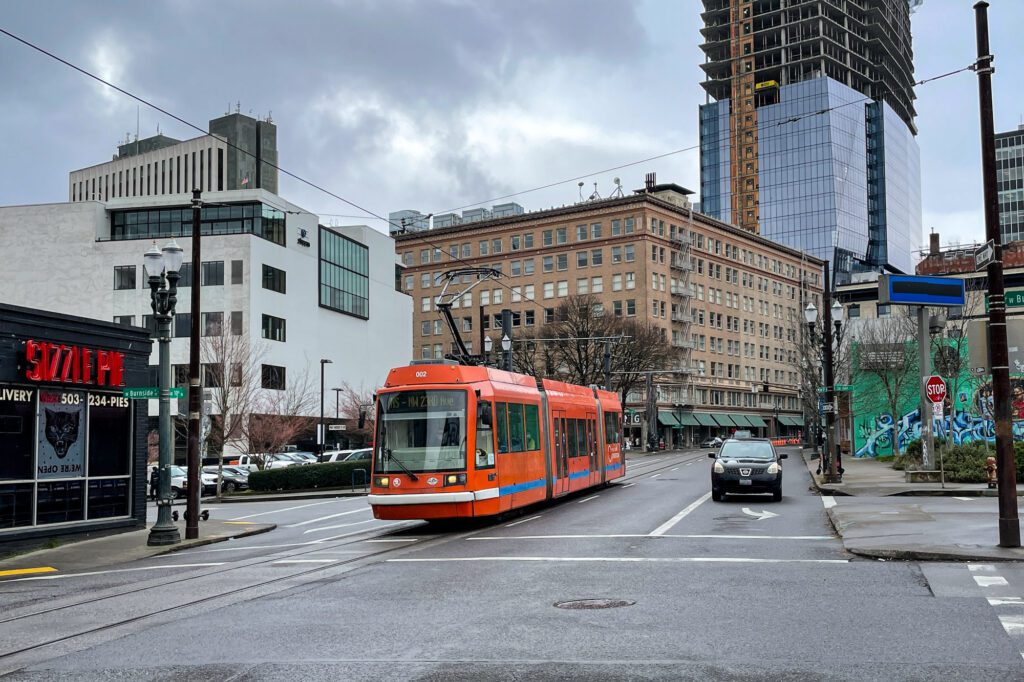
Public transportation is pretty good in Portland, though not at the level of cities like New York City.
There’s no underground subway – instead, there’s an above ground tram called the MAX that has been expanded over the past decade or two, and has pretty good coverage around the city. You can buy tickets from the machines on the platforms, and it connects the downtown core with the outer areas of the city pretty well.
There’s also an airport line, which is a nice, affordable option for getting to and from the airport (keep in mind that depending on where you’re going/coming from, you may need to transfer).
The bus system, run by TriMet, is also solid. Though, we’ve found that buses come a little less frequently than we’d like. Still, a good option for getting between downtown and the eastside.
Rideshare apps are thriving in Portland, with plenty of drivers available to take you wherever you need to go.
Lyft is the one we prefer (because they seem marginally less… evil?), though Uber is also a good option.
If you’ve never used it before, it’s an app on your phone that essentially acts like a taxi service, picking you up and dropping you off wherever you need to go.
Getting to Portland
Getting to Portland from other cities is relatively easy, especially from cities on the West Coast like Seattle, San Francisco, and Los Angeles.
Portland International Airport (PDX) might be the best airport in the country. It’s close to the city center, well-connected via public transit thanks to a MAX line, and is rarely busy enough to be super stressful. Plus, there’s a Stumptown Coffee in the main terminal!
Alaska Airlines is the main airline that flies to and from Portland, though most major carriers have routes here.
You can also take the train from Seattle (and Vancouver, B.C.), and it takes roughly the same amount of time as driving (driving is a hair faster) and flying (if you include the time from the minute you get to the airport to the minute you get to your hotel).
Unfortunately, it’s not that much cheaper, though it depends on when you’re traveling. It’s operated by Amtrak.
What is the Best Time to Visit Portland?
Summer is undoubtedly the best time to visit Portland, at least in our opinion and experience.
Summer in Portland
Summer in the Pacific Northwest is glorious, and truly makes slogging through the 7-8 gray months of the year (roughly November to June) worth it.
In the summer, you’re going to find blue skies and incredibly long, warm days, with sunsets after 9:30pm. It can get hot, but not the kind of face-melting hot you can get on the east coast or the Midwest.
Despite being a very wet place for most of the year, the humidity really isn’t bad at all.
All that said, you’re probably wondering if there’s a catch, and there is. Sort of.
The catch is that prices reflect the fact that summer is glorious, which means you’re going to be paying more for your hotel, flight, and car rental (if you go that route – if you’re just planning on staying in the city DO NOT RENT A CAR).
That’s not to say you shouldn’t plan a trip to Portland at a different time of year. Before moving here, we’d actually spent the most time in Portland in the winter months, including a five week stay to make sure that Alysha – a Californian – could handle a Pacific Northwest winter.
Spoiler: she survived.
Here is what to expect at other times of year.
Portland in the Fall
Fall brings less fall color in Portland than other places in Oregon and Washington because a lot of the trees here are Evergreen. Temperatures start to cool off in mid-September, and gradually fall through October.
It can be extremely variable – some days you may get 75 and sunny, some days you might get 52 and rainy. Be prepared for a variety of weather patterns, including rain.
Portland in the Spring
Coming out of winter, Portland starts to stir in March, with locals awakening from their months-long slumber to flock to parks in shorts and tank tops on that first summer-feeling day (even though it’s only 55 degrees out).
I really enjoy the springtime, when you’ll get a stretch of 5-6 dreary days followed by an amazing (though cold) bluebird day.
Plus, similar to the local human residents, the plant life starts to bloom in April, and the Rose Garden and cherry blossoms along the waterfront are spectacular (the latter only lasts about a week or so).
It’s going to be unpredictable, it’s probably going to rain a little bit, and it might be gray. Be prepared to be wet. It has also been snowing more and more often in the spring over the last few years.
Winter in Portland
Winter is the most affordable time to visit Portland, and for good reason. If you like sun and warmth, you’re not going to find much of either in the winter. However, if you’re into coziness and curling up by the fireplace with a book or your partner, then winter might be a nice time to visit.
Keep in mind that it will be dreary and gray basically all the time, and the days are painfully short, with the sun rising at 8:30 or 9:00 am, and setting by 5:00 pm, which is very much the price we pay for those incredible summer days.
However, I do want to point out that the kind of rain that happens in Portland (and Seattle, where I grew up) is different from rain elsewhere.
It’s more like a constant fine mist than anything resembling a downpour.
A rain jacket (or an umbrella, but that’s one way to stick out as a tourist – I can count on one hand the number of times I’ve used an umbrella in my decades in the Pacific Northwest) and waterproof shoes or boots will be your best friends.
There are a few pros of visiting in the winter in addition to the cost factor.
The other thing to note about the winter is that the waterfalls near Portland are raging.
If your Portland itinerary includes time for a day trip from Portland to make it out to the Columbia River Gorge or down to Silver Falls State Park, you’re going to be in for a treat!
The waterfalls are EPIC in the winter with all the rain. Oregon is known for its waterfalls, and the winter and early spring are the best time to experience them.
Where to Stay in Portland
There are essentially two areas we’d recommend people stay in Portland: downtown Portland (and the surrounding areas), and the Central Eastside.
Like most sections in this guide, we have an entire guide to deciding where to stay in Portland. For more neighborhoods and details on each area, head over there and read that.
Staying in Downtown Portland
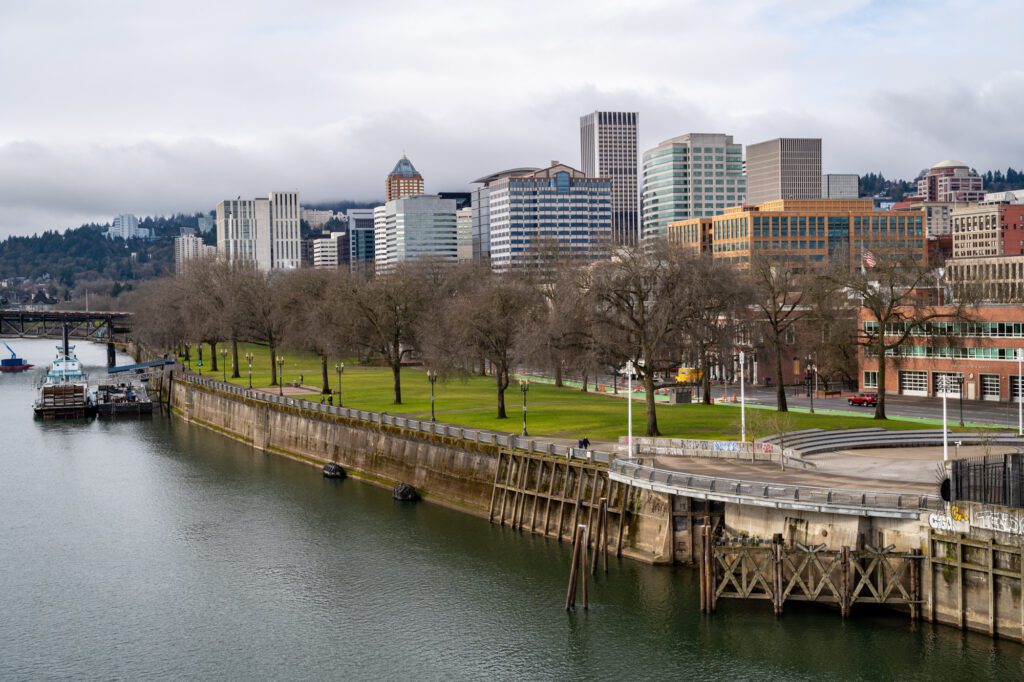
With one or two days, we’d strongly recommend staying in the Downtown core, which would include downtown Portland, the Pearl District, and the Northwest District (which also goes by Slabtown or the Alphabet District).
It’s very central, which means you won’t be trekking from one side of the city to the other to see the main sights with limited time, and there are tons of good places to eat and drink.
However, there’s an important thing to consider here, and that is the large, visible unhoused population in downtown Portland.
We’re not going to solve the housing crisis that Portland (and basically every other major city on the west coast) is facing in this guide, but we want to give you some practical information (that is based in reality, which most of the news coverage around Portland … isn’t) to help you make a decision on where to stay.
Wherever you choose, it’s important to remember that these are human beings we’re talking about, and they have been completely and utterly failed by governments at the local and federal level, who have done far too little to help everyday people cope with skyrocketing costs of living (funny how the cost-of-living increases from most companies haven’t kept up with that trend, wonder why that could be???).
The unhoused population is most visible in the northern end of Downtown and in Chinatown, near Voodoo Doughnut (if you’re looking for a landmark).
We’ve walked through there plenty of times, and never once felt unsafe or threatened.
Though you might see drug use and tents set up on the sidewalk, which is always uncomfortable and forces us to think about the frailty of our own situation (one car accident and a couple of required surgeries, and that could be us thanks to America’s broken medical system).
For those reasons, we’d recommend that most people stay in the southern end of the Downtown core, near Powell’s Books and Courthouse Square, where the unhoused population is still visible, but not nearly as common as areas further north.
There are a few good hotel options here. Our favorites would be the Ace Hotel (we’ve stayed at their hotels in NYC and Seattle before, and they’re generally a nice place to spend a few nights) and the Moxy Hotel (be prepared for small rooms, but they’re stylish, relatively affordable, and who needs a huge hotel room anyway?).
If you’re looking for another cool place to stay that’s also fairly affordable, check out Hotel Zags. It’s a little further south, but it’s close enough to be walkable to basically everything in this itinerary.
Staying on the Central Eastside
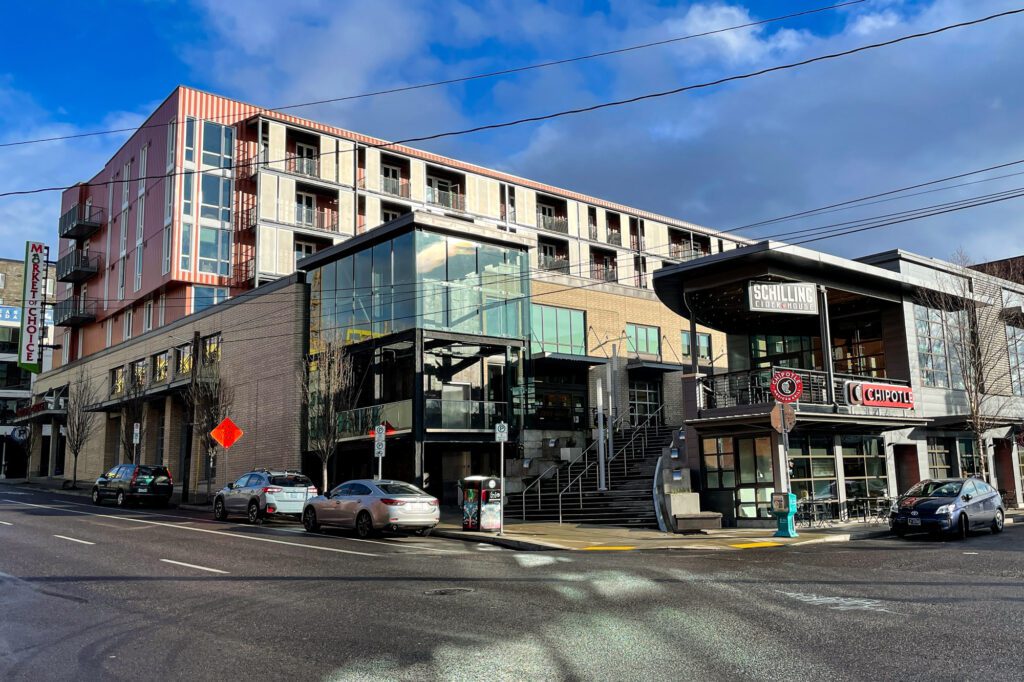
With 2-3 days (or more), we’d recommend staying on the Central Eastside, which is just across the river from downtown Portland and is a great, central home base for exploring both sides of the river.
This is our #1 recommendation in terms of where to stay, and we generally stayed here almost every time we visited Portland before moving here.
The Jupiter NEXT is the nicest hotel in the area, and we stayed there on one of our latest trips. Everything about the stay was superb, from the comfortable bed and the view of downtown Portland, to the friendly staff and free coffee in the morning.
It’s a little pricey, and we probably wouldn’t stay there every time we visited Portland, but it was NICE.
For more budget-conscious travelers, you’ve got two great options.
The Kex is an Icelandic import that is part hotel, part hostel, and this is their first location in the United States.
It’s warm and inviting, with lots of exposed wood, and they have both private rooms and dorms (though they’re currently closed). The common areas are more hostel-like, encouraging a social atmosphere. Plus, rooftop bar!
Lolo Pass is actually a hostel, though they have private rooms (like most hostels do these days).
They have a nice coffee shop in the lobby, and the location is great, close to some cool stretches of Burnside St, and walkable to Hawthorne and the area around the Goat Blocks, where you’ll find some good bars and restaurants.
